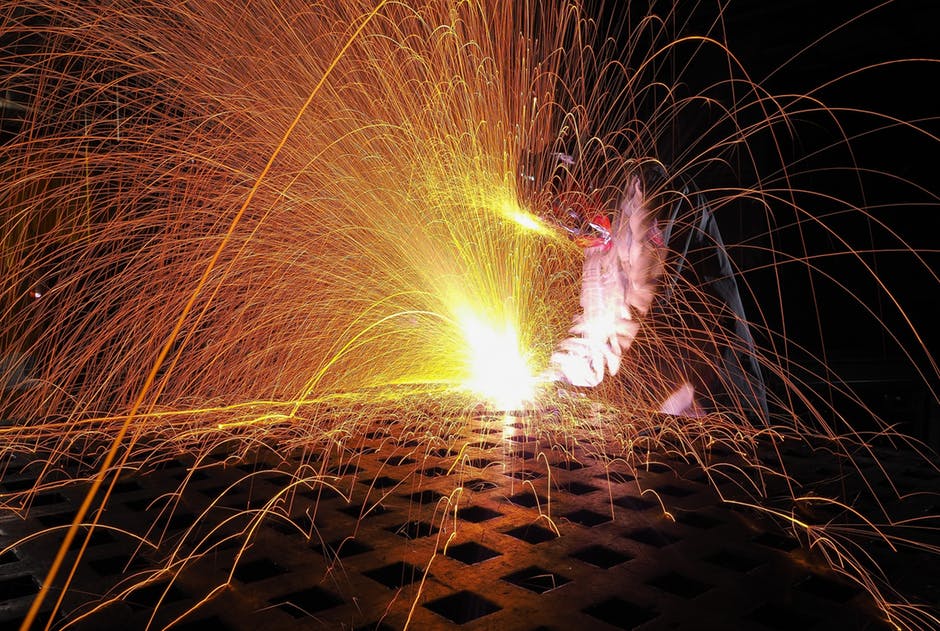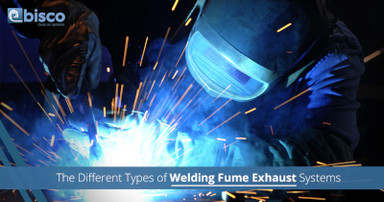Jun 5th 2017
The Different Types of Welding Fume Exhaust Systems
If welding is a large part of your company’s production process, a fume extractor can be a precious ally when it comes to eliminating harmful gases and elements at their source. Many industrial and manufacturing industries rely on a fume extractor to remove dangerous fumes from their workplace to ensure the safety of their employees. At Bisco Enterprise, we’ve been a leading provider of high quality fume extractors for more than 40 years and we’re dedicated to helping companies maintain a safe and contaminant free environment for their employees. When it comes to selecting the best weld fume extractor for your business, there are two primary types of fume extractors you can choose from.
The Different Types of Welding Fume Exhaust Systems
If you’ve been trying to decide on the best type of welding fume exhaust system for your factory, there are two main systems to take into consideration. At Bisco Enterprise, we’ve helped thousands of industrial and manufacturing companies find the perfect welding fume exhaust system to meet their needs. If you need assistance determining which exhaust system is right for your business, contact our product specialists today!
Fixed Welding Fume Systems

A fixed welding fume system consists of the installation of a series of galvanized pipes that collect hazardous fumes through their hood. Once these fumes have been collected, the hood conveys them to a chute or terminal to expel them from the workplace. You also have the option of filtering and recirculating these fumes back into your building if needed. In both types of extraction systems, the fumes are efficiently collected by articulated arms, hoods, filters or extracting benches.
At Bisco Enterprise, we’re proud to offer a quality selection of fume exhaust system parts and extraction kits. Browse our fume collection products online today!
Movable Welding Fume Extractors
A moveable welding fume extractor can be assembled on wheels, which makes it convenient to move when operations change. A compact and functional solution for a variety of metalworking companies, this is a great application to remove dangerous fumes from the workplace.
The Hazards of Welding Fumes
Welding is the process of joining metal pieces together by heating their surface to the point of melting. Welding can be classified into two main groups: fusion (heat alone) or pressure (heat and pressure) welding. Welding fumes can be extremely hazardous to employees, as metal welding fumes may contain metal particles such as aluminum, arsenic, cobalt, copper, iron, lead, manganese, nickel, silver, tin, titanium, zinc and more. Welding can also create a variety of harmful gases including argon, helium, nitrogen and carbon dioxide. While there are a variety of factors that can affect employee exposure to welding fumes, some of the most common include:
- The type of welding process being used
- The composition of your welding rods
- The location of your factory
- Air movement within your facility
- The base metals and filters being used
The Health Effects of Breathing Welding Fumes
Workplace air quality is regulated by a variety of standards and welding manufacturers are required to comply with them to the best of their ability. When companies fail to comply with air quality regulations, it can open their business up to various liabilities, including health lawsuits from employees. When factory workers breathe in welding fumes, a considerable amount of damage can be done to their health.
- Even acute exposure to welding fumes and gases can result in employee eye, nose and throat irritation, dizziness and even nausea.
- Prolonged exposure to welding fumes can cause lung damage and various types of cancer such as lung cancer and larynx cancer.
- Certain welding fumes may result in metal fume fever, stomach ulcers and kidney damage. They can also lead to damages in the nervous system.
- An abundance of gases such as helium, argon and carbon dioxide can displace oxygen in the air which can lead to suffocation, especially in confined or closed spaces.
Reducing Exposure to Welding Fumes in the Workplace
According to the Occupational Safety and Health Administration (OSHA), welding manufacturers are required to provide their employees with information and training on hazardous materials in the workplace. The Hazard Communication Standard (HCS) provides a coherent approach to classifying chemicals and communicating their hazardous information on labels and other safety data materials. Safety agencies recommend regular inspections of ventilation systems and exhaust fans, especially in areas of poor ventilation. In addition to these standards, other ways to effectively reduce the exposure of welding fumes include:
- Welding surfaces and countertops should be thoroughly cleaned of any coating or residue that could create toxic exposure to employees.
- Employees and factory workers should position themselves to avoid breathing in hazardous welding fumes and gases.
- A proper ventilation system can help the movement of fresh air in your facility to reduce the exposure of fume and gas levels in the workplace. Examples of mechanical ventilation include local exhaust, local forced air and general ventilation systems. Fixed and mobile devices can be placed close to employee breathing zones for extra ventilation.
- For factories that do not utilize a ventilation or exhaust system, welders should use natural drafts to help reduce fumes and gases. Roof vents, open doors and windows provide natural ventilation that can help to improve the airflow within a facility.
Personal Hygiene Practices
In order to control employee exposure to metallic compounds, special attention should be given to workers’ personal hygiene on the job. Areas with potential metal particulate contamination should be properly demarcated so workers know not to eat or drink in the designated area. If a worker's clothing has been contaminated by certain metal materials, it’s important to ensure they do not walk away from the work site with these articles of clothing on. Contaminated clothing should also never be laundered at home.
Factory Housekeeping
Many metal manufacturers provide a rigorous housekeeping program to minimize employee exposure to hazardous metals and gases. Effective control measures may include vacuuming dust particles from your facility with high efficiency particulate air (HEPA) filtered equipment or wet scrubbers. If possible, these cleaning procedures should be conducted at the end of the work day.
Order A Fume Exhaust System From Bisco Enterprise
If you’re looking for a high quality fume exhaust system for your metalworking company, Bisco Enterprise can help. Our fume exhaust specialists have been providing metal manufacturing companies with the best in fume exhaust systems and supplies for more than 40 years and we have the knowledge and expertise to help you find the perfect system for your workplace. From fume collectors to fume arms and air filters, Bisco Enterprise is a one stop shop for all of your fume collection needs. Browse our fume collectors online today or give us a call to learn more!

